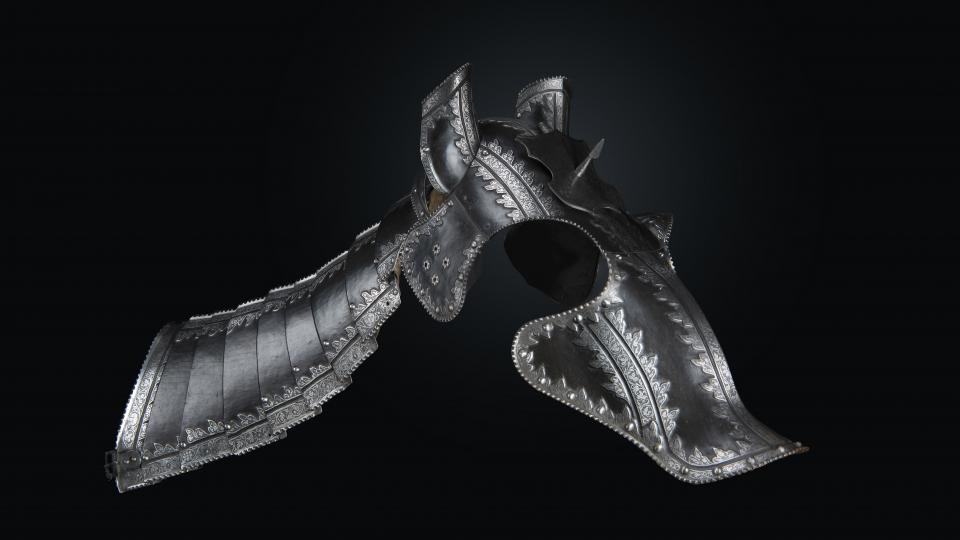
Shaffron and neck lame, parts of an armour for horses, Germany, 3rd quarter of the 16th century
Engraved and blackened shaffron and neck lame. The shaffron is embellished with three coats of arms.
The shaffron is the result of an evolution leading up to barding as practised around 1400. At that point in time, the horse’s armour closely resembles that of the rider, but is much heavier to wear and more expensive to produce.

The shaffron, usually consisting of one or two pieces, is designed to protect the most vulnerable parts of the horse’s head, especially the eyes and the nose. This kind of protection is used up till the middle of the 17th century.
This particular item is more elaborate and thus offers more protection, e.g. at eye and ear level. It features a holder intended to carry a plume, i.e. an identification mark. Armours such as these are true showstoppers for both armourer and owner: shape and design are complex and sophisticated.
The three coats of arms lead us to believe that this shaffron was produced in the Palatinate or Bavaria, or meant for a rider from those parts.

